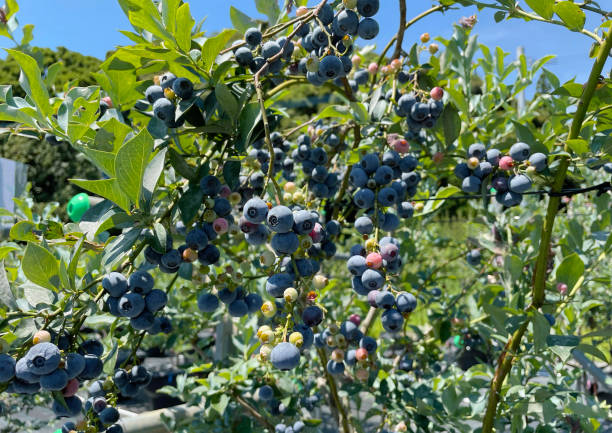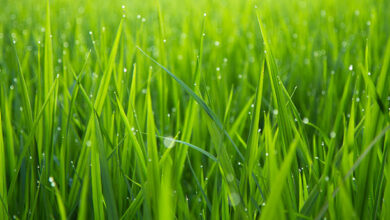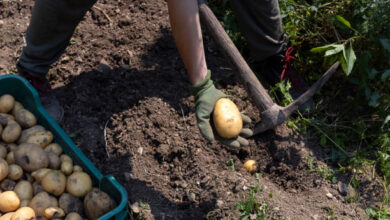The Japanese Blueberry Tree: A Stunning Addition to Your Garden

The Japanese Blueberry Tree: A Stunning Addition to Your Garden
Looking for an eye-catching tree that offers both beauty and practical benefits? The Japanese blueberry tree (Elaeocarpus decipiens) might be just what you need. This blog post will introduce you to the Japanese blueberry tree, exploring its unique characteristics, how to care for it, and why it’s a great choice for various landscapes. Discover the stunning Japanese blueberry tree and learn how it can enhance your garden with its aesthetic appeal and functional benefits.
Unique Features of the Japanese Blueberry Tree
Appearance: The Japanese blueberry tree is renowned for its glossy green leaves that provide a lush, tropical look. In spring, it produces small, inconspicuous white flowers that give way to attractive blue-black fruit in late summer and fall. These fruits add a delightful touch of color and attract various bird species.
Size and Shape: Typically growing between 30 to 40 feet in height with a similar spread, the Japanese blueberry tree forms a dense, rounded canopy. Its graceful, slightly weeping branches and lush foliage make it a standout feature in any landscape.
Seasonal Changes: This tree offers year-round interest. In autumn, its foliage turns shades of yellow and orange, creating a vibrant display. The tree’s fruit remains a focal point through the fall, adding seasonal appeal.
How to Grow a Healthy Japanese Blueberry Tree
Climate: The Japanese blueberry tree thrives in USDA hardiness zones 8 to 10. It prefers a subtropical to tropical climate, making it suitable for regions with mild winters and warm summers.
Soil Requirements: It adapts well to various soil types but prefers well-drained soil with a slightly acidic to neutral pH. Ensuring good drainage is crucial, as the tree does not tolerate waterlogged conditions.
Planting Tips: When planting your Japanese blueberry tree, choose a location with full sun to partial shade. Space the tree at least 10 to 15 feet away from buildings and other trees to accommodate its mature size. Dig a hole twice as wide as the root ball, place the tree in the hole, and backfill with soil. Water thoroughly to settle the soil and eliminate air pockets.
Essential Care for Your Japanese Blueberry Tree
Watering: Regular watering is important, especially during the tree’s establishment period. Water deeply once a week during dry spells. Once established, the Japanese blueberry trees are relatively drought-tolerant but will benefit from occasional deep watering.
Fertilization: Feed the tree with a balanced, slow-release fertilizer in early spring to encourage healthy growth. Avoid over-fertilizing, as excessive nutrients can lead to excessive foliage growth at the expense of fruit production.
Pruning: Prune the Japanese blueberry trees to maintain its shape and remove any dead or diseased wood. Light pruning in late winter or early spring will help maintain a healthy structure and promote better air circulation within the canopy.
Pest and Disease Management: The Japanese blueberry tree is generally resistant to pests and diseases. However, keep an eye out for common issues such as scale insects or fungal infections. Treat any problems promptly with appropriate remedies to ensure the tree remains healthy.
Why You Should Consider the Japanese Blueberry Trees
Ornamental Appeal: With its glossy leaves, attractive fruit, and seasonal color changes, the Japanese blueberry trees adds significant aesthetic value to any garden. Its dense foliage provides excellent shade, making it a popular choice for creating outdoor spaces.
Wildlife Attraction: The tree’s fruit attracts birds, including robins and cedar waxwings, adding life and movement to your garden. This makes the Japanese blueberry trees not only beautiful but also beneficial for local wildlife.
Landscape Versatility: The Japanese blueberry trees are versatile in landscape design. It can be used as a specimen tree, privacy screen, or part of a mixed border. Its adaptability to various garden settings makes it a valuable addition to both residential and commercial landscapes.
YOU MAY LOVE TO READ
Tree Trimming Near Me: Tips, Benefits, and Services
Are There Baobab Trees in Nigeria? Find Out.
The Blue Tick Beagle: Everything You Need to Know
Exploring Varieties of the Japanese Blueberry Trees
Popular Cultivars: While Elaeocarpus decipiens is the primary species, there are a few notable cultivars, such as ‘Stokes Purple’ which is known for its vibrant fruit color. Each cultivar may offer slightly different features, so consider what best suits your landscape needs.
Choosing the Right Variety: When selecting a Japanese blueberry trees, consider factors like mature size, growth habit, and specific environmental conditions. Consulting with a local nursery or landscape professional can help you choose the best cultivar for your garden.
Conclusion
The Japanese blueberry tree is a beautiful and versatile addition to any garden. With its glossy leaves, attractive fruit, and seasonal color changes, it offers year-round appeal and practical benefits. Consider adding a Japanese blueberry trees to your landscape and enjoy its stunning appearance and numerous advantages. Visit your local nursery or garden center to find the perfect tree for your garden and start enhancing your outdoor space today!




